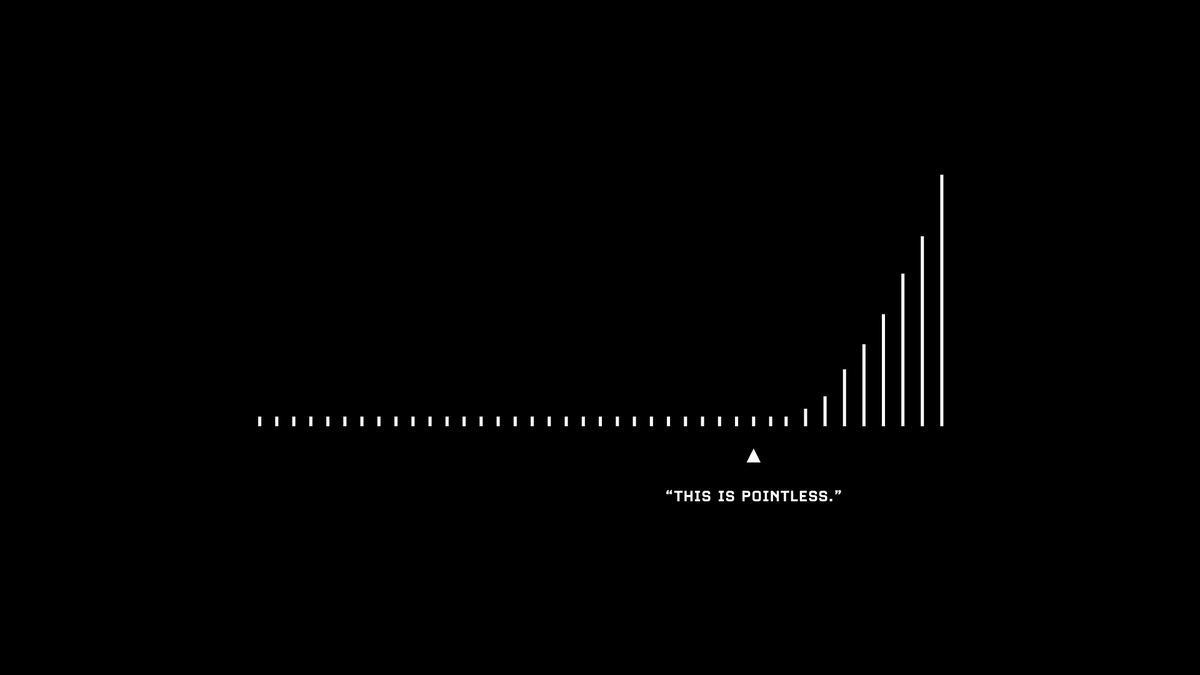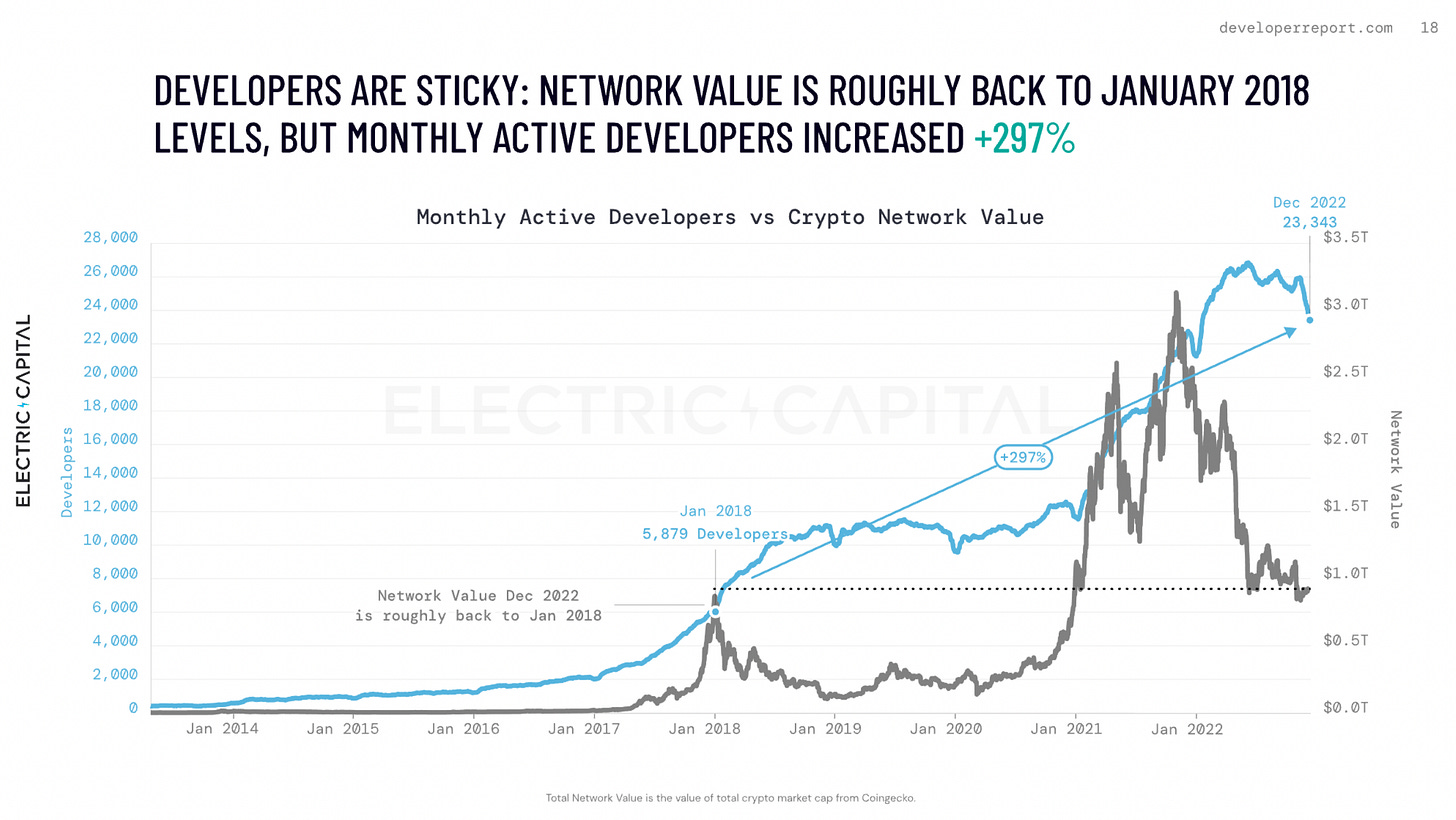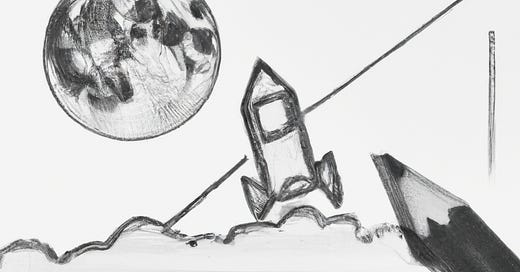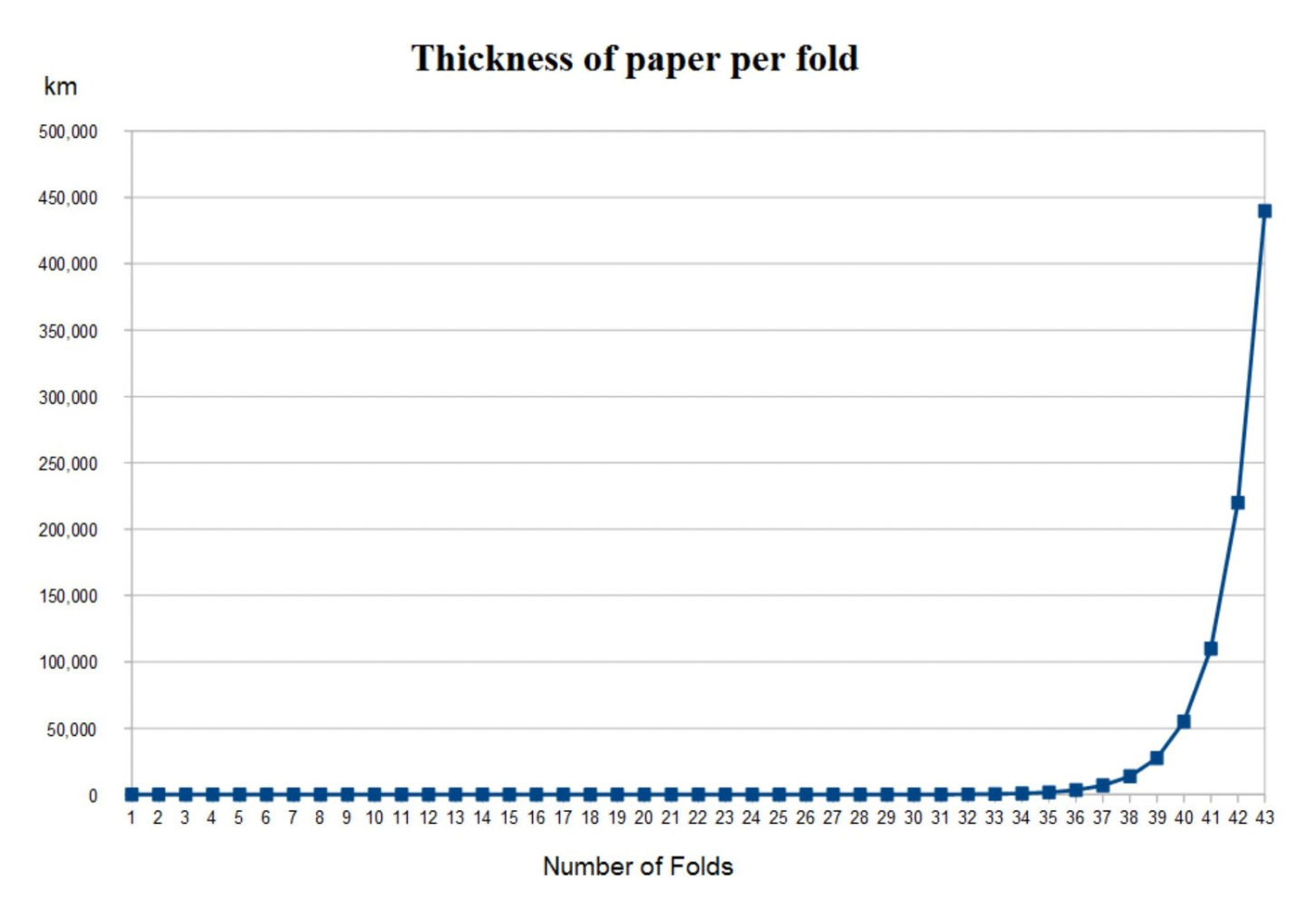[59] The 42nd Fold: Composability & Compounding in Web3
GM Readers!
Today we look at how compounding and progress works in Web3, specifically in light of an important building block called ERC 4337 (Account Abstraction), that was released last week.
Hope you enjoy!
Building Blocks + Pre-Read:
🤓 ERC4337 / Account Abstraction Readings: [What is Account Abstraction?], [ERC4337], [Zeneca on Account Abstraction], [CoinDesk], [Alchemy], [Cointelegraph], [Panther Protocol]
🎨 Life in Color Relevant Essays: [Web3 Renaissance]
A good friend of mine asked me this riddle.
Imagine you can fold a piece of paper in half as many times as you need to. How many folds will it take for you to reach the moon?
🌕
The most common answer he gets to this question is “easily a few hundred folds”.
The answer is 42 — by folding a regular piece of paper (0.1 MM thickness) in half 42 times, you would reach the moon. 🤯🤔
Here is the math: (0.1MM Thickness) x (2^42) = 439,805 km
(Avg) Distance from Earth to the Moon: 384,400 km
Intuitively, some of us understand that this is a doubling function. Every time you fold the paper in half, you are doubling the thickness.
We know it’s compounding.
But what surprises most people is the power of compounding.
My friend’s point is that “humans are terrible at internalizing the effects of compounding.”
So what?
Emerging industries like Web3 gain mass adoption through compounding.
But how the compounding works is often invisible and in the background to most people.
👇
Building Blocks: ERC 4337
Note: EIP 4337 is ERC 4337, have seen both used.
One of the common critiques that lead people to write off Web3 is that the user experience is terrible compared to the user experience in Web2.
Today that is generally a correct statement… but this reasoning fails to capture the innovation that is taking place despite all the doom and gloom headlines.
For example: The Ethereum community just implemented this thing called EIP (Ethereum Improvement Proposal) 4337: Account Abstraction.
ERC 4337 transitions Ethereum’s current account structure from externally owned accounts (EOAs) to smart contract accounts (Contract Accounts).
ERC 4337 enables:
Wallet recovery: if a user loses their private keys, they won’t lose all their crypto because they can now use social recovery or create any arbitrary logic to recover funds (e.g. in the event of x, y-people I selected can participate in social recovery)
Multi-sign transactions: define permissions on who needs to approve a transaction before it can execute (e.g. the CEO and CFO of a DAO needs to approve this type of transaction)
Programmable authentication logic: this means having a user sign a transaction with private keys won’t be the only way to send a transaction
Gasless transactions / Sponsored Transactions: One of the chicken / egg problems with Web3 today is if a user creates a wallet, how do they fund it with ETH to pay gas on Ethereum without going through a centralized on-ramp? With gasless / sponsored transactions, an organization that wants to onboard users can now pay for gas.
And more…
Without getting into the technical details, ERC 4337 is a big step towards solving the Web3 user experience problem.
The big idea is that ERC 4337 makes wallets (and the wallet experience) more composable and programmable.
This opens up another design space for founders, developers and builders to create products and services that make Web3 easier to use.
Composability enables Compounding
In a composable system, different components can be selected and assembled in various combinations to achieve a specific goal. In software development, composability refers to the ability to combine functionality or leverage other code to build something else.
Web3 runs on composability.
With composability, when a developer / team creates something and open sources it for others to use, a new developer doesn’t have to start from scratch.
Find the solution once, allow everyone to use it.
Composability isn't just in software, it's also in the culture. The open culture of experimentation and building in public allows everyone to learn from the experiments that other people run in public.
This all decreases the cost of innovation and experimentation, which then enables more developers to build more building blocks that others can use.
🎡
ERC 4337 is just another example of all of this.
ERC 4337 is also EVM compatible, which means right out of the gate, it can be used in any EVM compatible blockchain (e.g. Polygon, Avalanche, BNB Chain, etc). And because its open source, all the problems that ERC 4337 solves is solved for everyone building in the industry.
This is drastically different than traditional software development, where one company has a breakthrough innovation but generally keeps it behind closed doors for no one else outside of the company to use.
Composability enables compounding at the industry wide level.
Web3 combines the “decentralized, community-governed ethos of Web1 with the advanced, modern functionality of Web2.”
Financial Cycles vs Technology Momentum
But why is compounding so hard to see and internalize?
Compounding takes some time to build momentum. And in crypto, the technology and finance parts are often thought of as one and the same.
One way to view the technology adoption cycle is the Carlotta Perez framework that looks at how technology and financial capital underpin innovation cycles. Web3 is probably somewhere between Irruption and Frenzy in the image below.

Another way to think about adoption is through the graphic below, produced by Visualize Value. The graphic below outlines exponential growth, but the path towards exponential growth is usually through a lot of “this is pointless.”

To get to exponential growth (i.e. going beyond turning point and “this is pointless”), there needs to be enough momentum to create a tipping point.
At some point the collective work of the Web3 compounds enough that it reaches a tipping point — a crossing of the chasm.
The above relationship is easy to understand (logically / intellectually) but hard to internalize because its often muddied by the financial cycles of Web3.
For those outside the industry, some see price as a proxy for the underlying innovation. But focusing on things like price, headlines or anything but the actual technological progress negatively skews one’s opinion of the momentum that is actually taking place on the technology side of Web3.

The price of crypto is related to the technology of crypto, but they are not the same.
The financial cycles are volatile and go through a serious of ups and downs. The technological progress is up and to the right, plus compounding. Whether you measure it by number of developers, innovations, EIPs shipped … it’s compounding and building momentum.
Just a few years ago, NFTs were barely a thing. DeFi was barely a thing.
Account abstraction has been talked about for years. The original EIP4337 proposal was introduced in September 2021. It was just an idea on a forum. When the bear market hit, a bunch of smart people were still working on EIP 4337.
And this is just one example in one community in one part of Web3 (infrastructure). (See here for a list of EIPs).
There are a number of teams, founders, builders, etc innovating across all industries around the world on Web3.
The Power of Compounding
But aren’t other industries outside of Web3 innovating as well?
Of course, the difference is the rate of compounding.
In Web3, the default mode is create something and open source it for others to use as a building block. This is the Web3 ethos powered by composability, openness and transparency.
A new person jumping into Web3 benefits from all the work of those that came before them.
It’s about Standing on the Shoulder of Giants.
🗿
Back to the opening story about paper folding, my friend often follows up his first question with:
“If it takes 42 folds to reach the moon, how many more folds does it take to get back to Earth (from the Moon)?”
It only takes 1 more fold to get back from the Moon.
The 42nd fold gets you to the moon. The 43rd fold gets you back.
That’s the power of compounding.
Most of us in Web3 are contributing to the 42nd fold.





